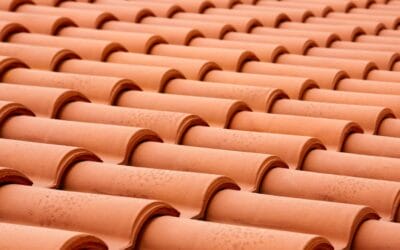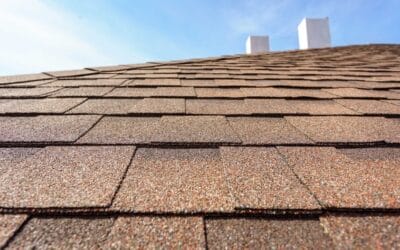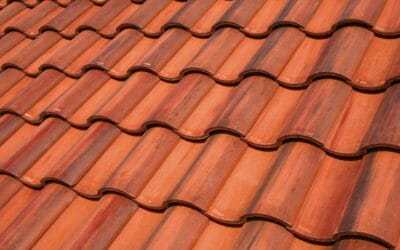Blistering
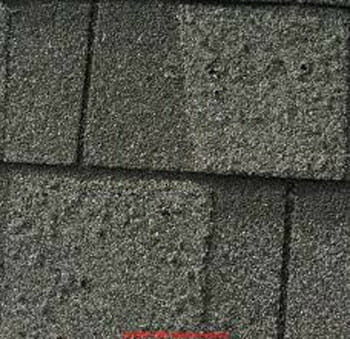
Asphalt shingles can blister due to poor ventilation, improper installation, and manufacturing defects. The cause can be difficult to assess because the result is the same regardless of the cause. Blistering occurs when moisture becomes trapped under, between, and within a shingle.
If the blistering is due to a manufacturing defect, moisture has been allowed to infiltrate the material and become trapped within the material during manufacturing. When summer heat and UV heat the shingle, the moisture expands, causing a blister. Just with any blister, if popped, it tear will allow moisture and dirt under your roof.
Degranulation (Granule Loss)
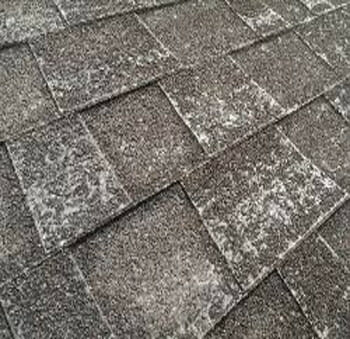
Degranulation can occur from a failure of adhesion, impacts, and age. Over time, the asphalt in the shingle will become more brittle due to UV damage, heat, and normal wear. If the granules are coming off due to a manufacturing defect, you can usually spot it because the damage will be similar all over the roof.
Normal wear causes an asphalt shingle to gradually lose granules consistently over the entire roof. If granules are coming loose (but just in certain areas) and your roof is less than two years old, a manufacturing defect more likely caused the problem. The bond between the asphalt and the granules has failed prematurely and will lead to water infiltration of the shingle.
Note that degranulation also occurs during a hailstorm, severe winds, and other natural events. If you are unsure, contact a reputable roofing professional for an opinion before calling your insurance adjuster. Why? More detail here.
Craze Cracking
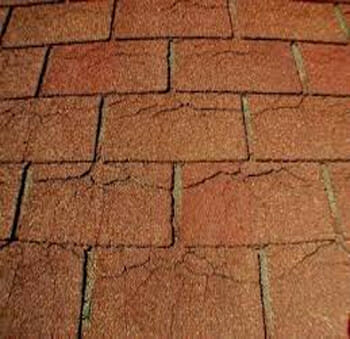
Craze cracking is the result of the outside of the shingle changing in size relative to the inside of the shingle. If the shingle is defective from the factory, the cause is likely a loss of volatiles within the shingle, making the shingle both brittle and less waterproof.
Volatiles are compounds added to asphalt during manufacturing to keep the shingle pliable and waterproof. If too much filler is added to the mix, volatiles can leach out prematurely. When this happens, the outer surface becomes slightly smaller than the inside. This flexing between the inner and outer layers causes the craze cracking.
Craze cracking causes cracks in the outer surface, which can allow water to penetrate the shingle. Craze cracking can affect the fiberglass mat as well, but craze cracking usually occurs on the top surface of the shingle only, not the entire shingle.
Curling/Cupping
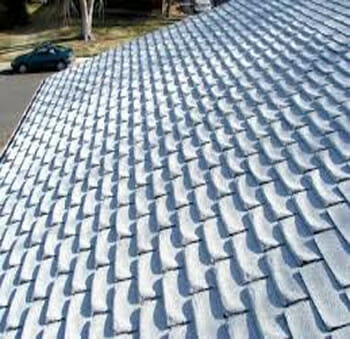
Curling and cupping of an asphalt shingle occurs when the shingle can no longer remain flexible due to UV and heat damage. Over time, the volatiles in the shingle naturally degrade, allowing heat and moisture to bend and twist the shingle.
Often, the shingle stiffens into a cupped or curled position, making those sections much easier to break off. If your shingles begin cupping and curling within the first five years after installation, first check your roof ventilation, then your shingles.
Ineffective attic ventilation causes the shingles to be subjected to heat from both sides of the roof. All manufacturers provide ventilation requirements for their roof materials and they must be followed. The most common cause of asphalt shingle cupping and curling is age and inadequate ventilation of the roof system.
However, if your asphalt shingle roof begins to cup and curl within the first five years and your ventilation is appropriate, your shingles may be defective.

